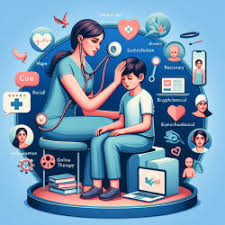Embracing Innovation in Speech Therapy: The Role of Telepractice
In the ever-evolving landscape of educational psychology, one constant remains: the need to provide effective, accessible support for children with speech and language challenges. As educational psychologists, your role in facilitating these services is crucial. With the advent of telepractice, a new frontier in speech therapy has emerged, promising to address longstanding challenges in speech therapy staffing and service delivery.
The Data-Driven Impact of Telepractice
Telepractice, or online therapy, has shown remarkable efficacy in delivering speech therapy services to schools. According to a study published in the Journal of Telemedicine and Telecare, children receiving telepractice services demonstrated similar, if not superior, outcomes compared to traditional in-person therapy. This data underscores the potential of telepractice to revolutionize speech therapy delivery.
Moreover, telepractice addresses a critical issue: speech therapy staffing shortages. By utilizing online platforms, therapists can reach students in remote or underserved areas, ensuring that every child has access to the support they need. This innovative approach not only optimizes resources but also maximizes the reach and impact of speech therapy services.
Enhancing Accessibility and Flexibility
One of the most significant advantages of telepractice is its ability to enhance accessibility. Children in rural or geographically isolated areas often face barriers to receiving consistent speech therapy services. Telepractice eliminates these barriers, providing equitable access to therapy for all students, regardless of location.
Additionally, telepractice offers flexibility in scheduling, which can be particularly beneficial for schools with limited resources or varying student needs. This flexibility allows educational psychologists to coordinate therapy sessions that fit seamlessly into a student's daily routine, promoting consistency and engagement in therapy.
Encouraging Collaboration and Innovation
Telepractice also fosters collaboration among educational psychologists, therapists, teachers, and parents. Online platforms enable seamless communication and information sharing, allowing for a holistic approach to a child's development. This collaborative model encourages innovation and the sharing of best practices, ultimately enhancing the quality of services provided.
Taking the Next Step
As educational psychologists, your role in advocating for and implementing telepractice is vital. By embracing this innovative approach, you can ensure that every child receives the speech therapy services they need to thrive. The data is clear: telepractice is not just a temporary solution but a transformative model for delivering speech therapy in schools.
Now is the time to take the next step. Explore the possibilities of telepractice and consider how it can be integrated into your school's service delivery model. By doing so, you will be at the forefront of innovation, driving positive outcomes for children and overcoming the challenges of speech therapy staffing.
Conclusion
The joy of seeing a child overcome speech and language challenges is immeasurable. By leveraging telepractice, educational psychologists can ensure that this joy is accessible to all children, regardless of their circumstances. Embrace the innovation, and together, let's create a brighter future for every child.










